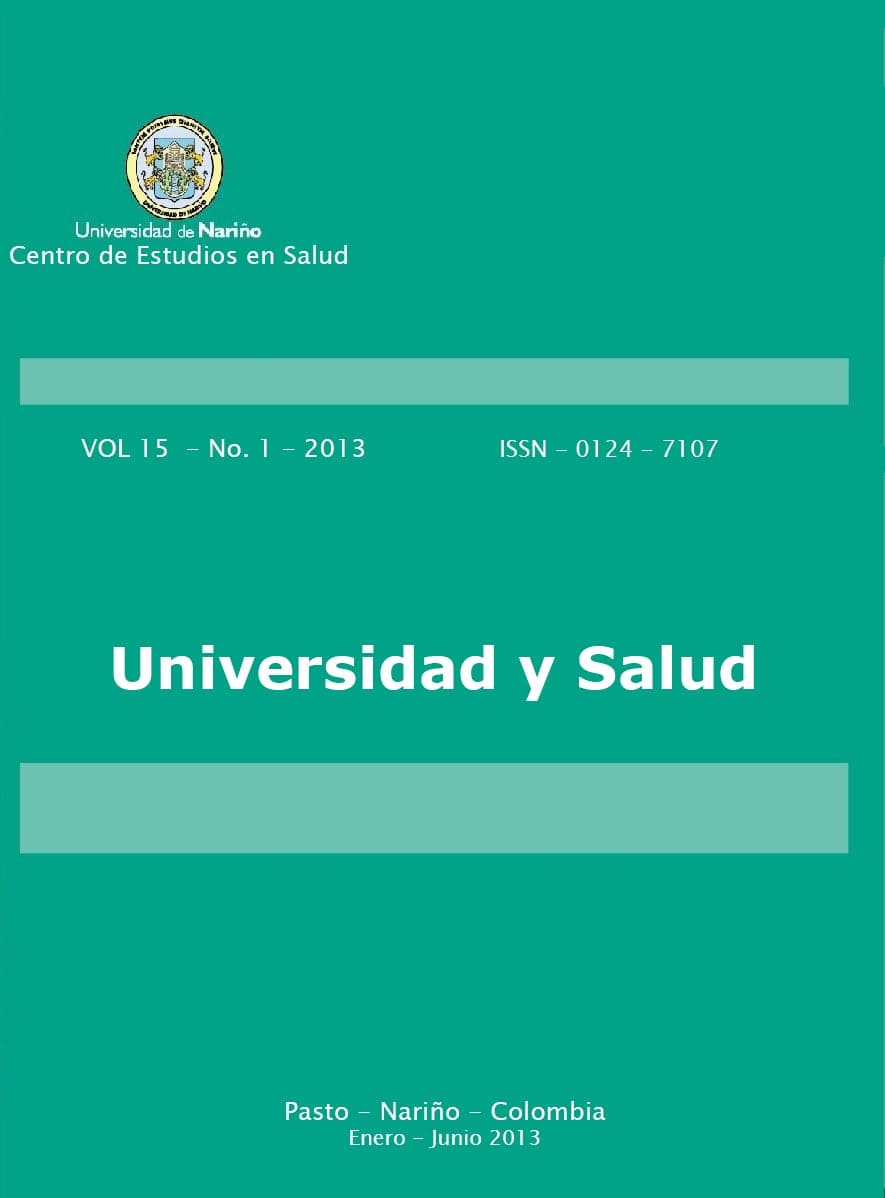Infección por VPH en mujeres del municipio de Pasto, Colombia con resultados de citología normal
Palabras clave:
Virus de papiloma humano, Cáncer de cuello uterino, Reverse line blot hybridization , InfecciónResumen
Introducción: El cáncer de cuello uterino (CCU) asociado a la infección por VPH se considera un importante problema de salud pública a nivel mundial. En Colombia, es la segunda causa de muerte por cáncer en mujeres. En el municipio de Pasto (N) ubicado al suroccidente de Colombia, la tasa de incidencia es de 27,3/100.000 habitantes. Profundizar en la historia natural de la infección por VPH permitiría mejorar las estrategias de control y diagnóstico temprano para evitar la progresión de este tipo de cáncer. Métodos: Se realizó la detección y tipificación del VPH, mediante Reverse line blot - GP5+/GP6+, en muestras de cepillado cervical tomadas de
145 mujeres que acudieron a toma de citología en 7 Instituciones Prestadoras de Salud del municipio de Pasto.
Los resultados obtenidos se analizaron junto con algunas variables poblacionales. Resultados: Se detectó VPH
en 6,9% de las pacientes, los genotipos encontrados fueron VPH 11, 45, 53, 54, 55, 56, 70 y 84, los tipos virales
de alto riesgo representaron el 54,6%. El 10% de las mujeres VPH positivas, presentaron infección múltiple. La edad, la infección por otros microorganismos, el número de gestas, el uso de anticonceptivos y los cambios celulares reactivos asociados a inflamación no constituyeron factores determinantes para adquirir o explicar la infección por el VPH en mujeres con citología normal. Conclusión: La infección por VPH fue más frecuente en mujeres < 37 años, con al menos una gesta previa y con algún grado de inflamación en el cérvix.
Palabras clave: Virus de papiloma humano, cáncer de cuello uterino, reverse line blot hybridization, infección. (Fuente:
DeCs, BIREME).
ABSTRACT
Introduction: Human Papillomavirus is sexually-transmitted well known for being the main cause of cervical cancer, which constitutes a major problem of public health worldwide. In Colombia, cervical cancer is the second cause of women mortality, and Pasto shows one of the highest incidence rates (27.39 per 100,000 inhabitants). Further in-depth research about natural history of HPV infection, would enable to improve the early-diagnosis and control strategies of the viral infection avoiding the progression to cancer. Methods: In the present study was performed the HPV-detection and typing by Reverse line blot - GP5+/6+, in cervical cell samples taken from 145 women who attended the cytology’s taking in 7 IPS (health provider institutions) of Pasto city (Colombia). Such results were analyzed together with some population variables. Results: The HPV was detected in 6.9 % of the patients studied; meanwhile, the genotypes found were: HPV 11, 45, 53, 54, 55, 56, 70 and 84, the high-risk HPV types represented 54.6%. Among women HPV positive, 90% had a single HPV infection and 10% of patients had a multiple HPV infection. Age, infection with other microorganisms, the number of pregnancies, the use of contraceptives and reactive cellular changes associated with inflammation were found to be not decisive factors for acquiring or explain HPV-infection into the group of women with normal cytology. Conclusion: The HPV
infection was more often for women under 37 years having at least one previous pregnancy together with some
degree of cervix inflammation.
Key words: Human papillomavirus, cervical cancer, reverse line blot hybridization, infection. (Fuente:
DeCs, BIREME).
Descargas
Métricas
Descargas
Publicado
Cómo citar
Número
Sección
Licencia
Derechos de autor 2014 Universidad y Salud

Esta obra está bajo una licencia internacional Creative Commons Atribución-NoComercial-CompartirIgual 4.0.



















